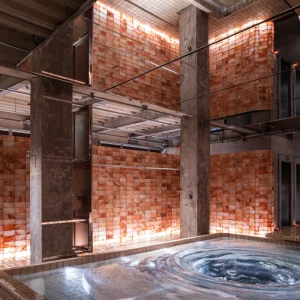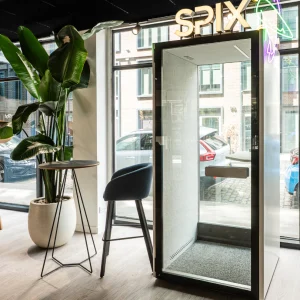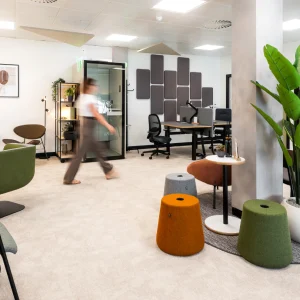Established on May 1, 1959, the Goddard Space Flight Center (GSFC) is a major NASA space research laboratory, named in recognition of Dr. Robert H. Goddard, the pioneer of modern rocket propulsion in the US.
The completion of the Exploration Sciences Building is a major step forward in the overall development of the Goddard Facilities Master Plan. Code 600 employees (Earth and space science) can now consolidate their relocated operations in both Building 34 and the newly renovated Building 21.
The building boasts to lead the agency in green building design, becoming the agency’s largest green building and achieving a USGBC (United States Green Building Council) Gold rating. One of the factors that contribute to the ESB’s rating is its green roof. The roof is painted a brilliant white to reflect the sun’s heat.
One of the main factors considered while designing the building was to foster collaboration among scientists. So “collaboration areas” are located in the building’s center on each floor near a centralized staircase. There is also a “Conference Hallway” located on the first floor, and an oversized “Symposium Room” capable of seating 200 persons. A large skylight at the centralized staircase allows natural light to spill throughout the top two floors of the collaboration area. To assist with easy navigation throughout the building, each floor is uniquely color coded.
The laboratories have a number of special features. Lab floors are all made from epoxy flooring. Lab floors are grounded to prevent electrostatic discharge so static electricity doesn’t disrupt electrical equipment. Lab spaces can also be manipulated to create one, two or three separate areas, and even sectioned, each area will still have its own lab racks, lighting, and air ventilation. There are also several laboratories with black walls, floors, furniture and fixtures to prevent light reflectivity problems, when scientists are developing and testing optics.
Some of the other features that contribute to ESB’s green building status include: large reflective paving areas to reduce heat island effect; site lighting designed to reduce light pollution; plumbing fixtures to reduce water usage; no Chlorofluorocarbons ozone depleting HCFCs/Halons in the building; reduced energy usage; a proactive stormwater management system; recyclables areas; chemical use areas and copy rooms are separated, vented, and at negative pressure to prevent odor distribution; and a manifold exhaust system allows separation of hazardous and non-hazardous lab exhaust, recirculation of non-hazardous lab exhaust thereby reducing energy costs.
Goddard Center director Rob Strain said, “The new building will ensure NASA’s continued leadership at the forefront of scientific discovery for decades to come. Within these walls, scientists and technologists will ponder instruments and spacecraft to gather information that could answer some of the fundamental science questions of our age.”
The new building unifies Goddard’s east and west campus. It was designed by EwingCole Architects, based in Philadelphia and Washington, and was built by the Manhattan Construction Company of Fairfax, Virginia. The contract was awarded in April, 2007.
NASA’s Goddard Space Flight Center is home to the nation’s largest organization of combined scientists, engineers and technologists that build spacecraft, instruments and new technology to study the Earth, the sun, our solar system, and the universe.





